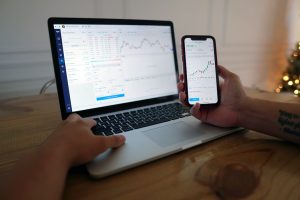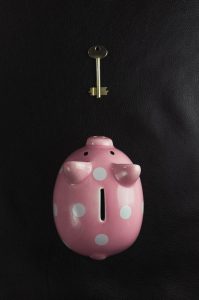Counting waves in forex trading can be an effective way of identifying potential turning points in the market. This analysis is popularly known as Elliott Wave analysis, which is based on the idea that markets move in repetitive cycles or waves.
To count waves in a trend, traders use a combination of technical analysis tools and market psychology. The Elliott Wave theory suggests that the market moves in five waves in the direction of the trend, followed by three corrective waves against the trend.
In this article, we will discuss how to count waves in a trend forex and how to use this analysis to make informed trading decisions.
Step 1: Identify the Trend
The first step in counting waves in a trend forex is to identify the trend. This can be done by using technical analysis tools such as moving averages, trend lines, and chart patterns. A trend is defined as a series of higher highs and higher lows in an uptrend or lower highs and lower lows in a downtrend.
Step 2: Identify the Impulsive Waves
Once the trend has been identified, the next step is to look for impulsive waves. Impulsive waves are the waves that move in the direction of the trend and are numbered 1, 2, 3, 4, and 5. These waves are the main drivers of the trend and tend to be longer and stronger than corrective waves.
To identify impulsive waves, traders can use various technical analysis tools such as Fibonacci retracements, moving averages, and trend lines. These tools can help traders to identify the highs and lows of each wave and determine their length and strength.
Step 3: Identify the Corrective Waves
After identifying the impulsive waves, the next step is to look for corrective waves. Corrective waves are the waves that move against the trend and are numbered A, B, and C. These waves tend to be shorter and weaker than impulsive waves and are used to correct the excesses of the impulsive waves.
To identify corrective waves, traders can use technical analysis tools such as Elliott Wave indicators or oscillators. These tools can help traders to identify the highs and lows of each wave and determine their length and strength.
Step 4: Count the Waves
Once the impulsive and corrective waves have been identified, the next step is to count the waves. As mentioned earlier, the Elliott Wave theory suggests that the market moves in five waves in the direction of the trend, followed by three corrective waves against the trend.
Therefore, in an uptrend, traders should count five impulsive waves followed by three corrective waves. In a downtrend, traders should count five impulsive waves followed by three corrective waves.
Step 5: Determine the Wave Count
After counting the waves, the next step is to determine the wave count. This involves identifying the current wave count and the potential turning points in the market.
Traders can use technical analysis tools such as Elliott Wave indicators or oscillators to determine the wave count and potential turning points. These tools can help traders to identify the highs and lows of each wave and determine their length and strength.
Step 6: Make Informed Trading Decisions
Finally, after determining the wave count and potential turning points, the last step is to make informed trading decisions. Traders can use the wave count to identify potential support and resistance levels and to determine the risk-reward ratio of their trades.
For example, in an uptrend, traders can use the wave count to identify potential buying opportunities at the end of the corrective waves. In a downtrend, traders can use the wave count to identify potential selling opportunities at the end of the corrective waves.
Conclusion
Counting waves in forex trading can be a powerful tool to identify potential turning points in the market. The Elliott Wave theory suggests that the market moves in repetitive cycles or waves, and traders can use this analysis to make informed trading decisions.
To count waves in a trend forex, traders should first identify the trend, then identify the impulsive and corrective waves, count the waves, determine the wave count, and finally make informed trading decisions. By following these steps, traders can improve their trading performance and increase their profitability.





